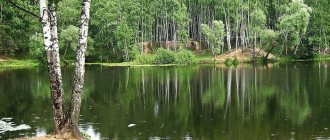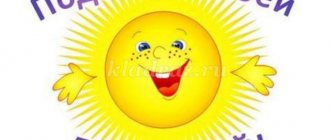Patriotic corner in kindergarten, brief description
A good help for the comprehensive implementation of the tasks of moral and patriotic education in kindergarten is a colorful, informative, patriotic corner in the group that attracts the attention of children. It can be designed, and then updated and supplemented with new materials together with preschoolers and their parents. According to the Federal State Educational Standard, the patriotic corner in a preschool institution should include six sections.
The main thematic blocks of the patriotic corner in kindergarten:
- “State” is the central block of the patriotic corner. Here in a prominent place are placed: a photograph of the President, images of the State Emblem, the State Flag, the text of the National Anthem, and a geographical map of the country.
- "Motherland". Illustrations of the natural and flora of Russia and the area in which children live. Symbols of the native land. Maps of the area. Photos of famous compatriots, heroes of the Great Patriotic War. Thematic folders introducing pupils to the achievements and glorious history of their native land.
- "Family traditions". Photos, children's drawings and applications dedicated to the theme of family, parents' work, joint family travel, traditions and holidays. Family trees of families depicted by children.
- "Folk Art and Culture". Dolls in national costumes. Models of peasant huts. Antique household items. Samples of folk art: artistic painting, embroidery, pottery and other folk crafts. Albums with photos and reproductions.
- "Small Motherland" Photos, postcards, posters depicting the streets of your hometown/town/village, kindergarten. Geographic map of the locality in which the students live. Drawings on the theme of labor, the beauty of the native nature, city holidays, and events significant for the native land. Portraits of fellow countrymen who glorified their small homeland.
- "Literature". Works of art, brochures, folders with visual materials on moral and patriotic themes.
Design options for patriotic corners in preschool educational institutions:
Middle group - we recognize ourselves as citizens
The age of four years is called the age of “why”. The child begins to think consciously, he sees that he and the world are not the same thing, but perceives himself as part of it. It's time to start introducing the child to the concepts of “country”, “Motherland”, “people”, “traditions”, “defense of the fatherland”. Conversations about what “our land” is are held both as planned, during educational activities, and unobtrusively, in routine moments (for example, on a walk or during a game). On the eve of the May 9 holiday, a conversation is held about the war, but in a simplified version, focusing on the valor of the entire people, on uniting for victory. Victory for life.
What is “patriotism” for a preschooler
A preschool child is still too young to understand the full depth of the word “patriotism,” but he already knows how to love. His love is natural. He loves everything that surrounds him: home, relatives, village, his street, city, river, where he and his mother go for a swim. It is these feelings that need to be nurtured and consolidated. Give the concept of “Motherland” in the most unobtrusive way, associating this word only with the most positive aspects. Thus, the foundation of patriotism is laid for a long time.
For a child, “being a patriot” is natural. He is already a patriot. He loves, sincerely and from the heart.
Younger ages and folklore
Folk culture – what is it? How is she vaccinated? You cannot say to a child: “Love, this is your culture.” It is absorbed from infancy along with folk games, nursery rhymes, and sayings. With good Russian folk tales and cheerful characters - this is how patriotic education begins among children of primary preschool age. In routine moments (washing, walking, getting ready for bed), the teacher skillfully weaves elements of Russian folk art so that the little citizen already begins to feel like a part of his people.
Modern problems of patriotic education




